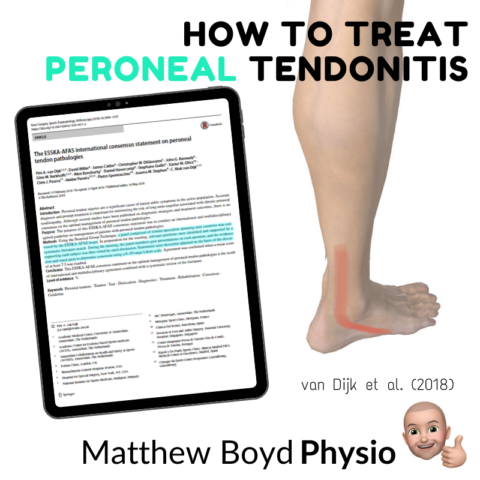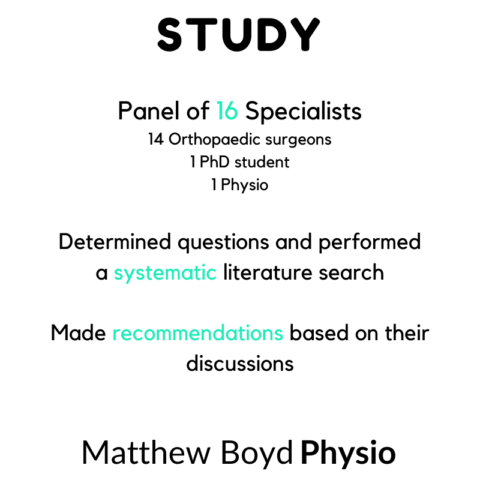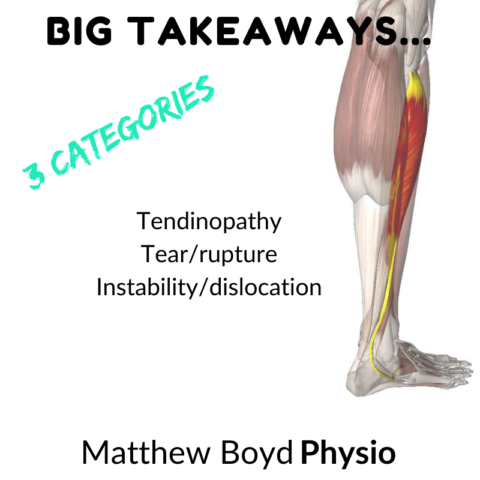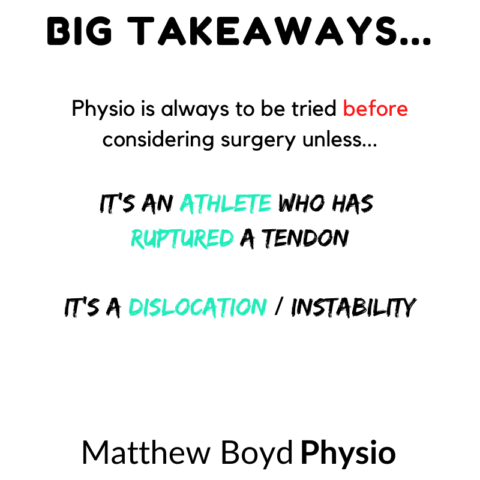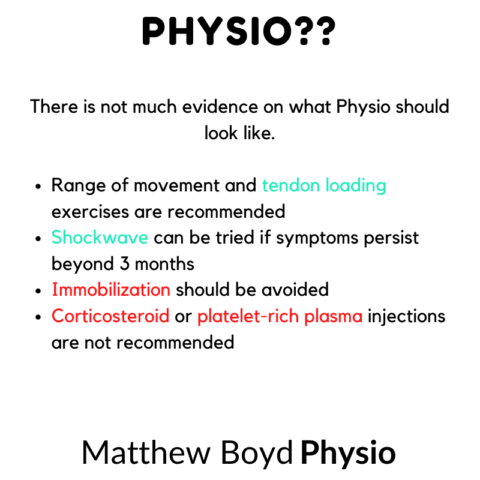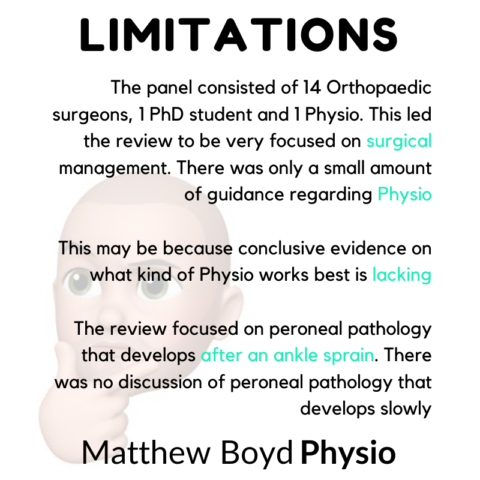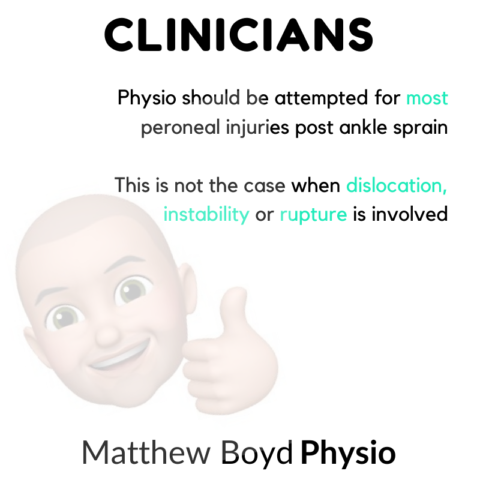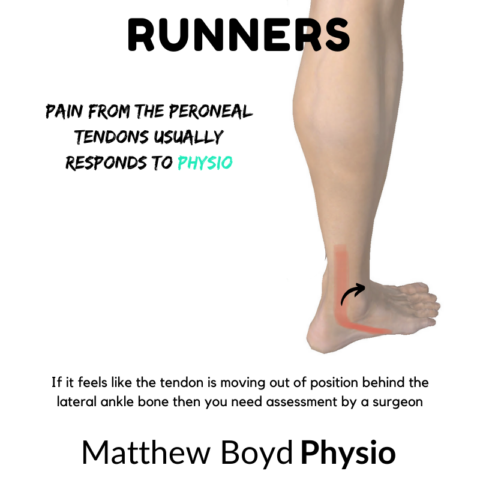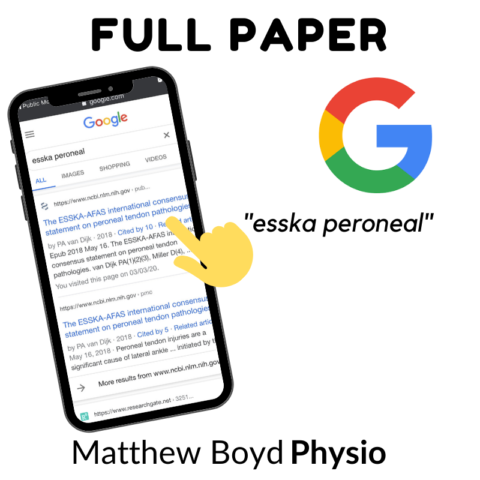Pain just behind the ankle bone is commonly related to the peroneal tendons. These tendons come from the peroneal muscles that help support the lateral ankle. The most common cause is peroneal tendonitis (aka tendinopathy) but you can also get peroneal muscle tears causing problems. Sometimes the tendon flicks around that bone on the outside of the ankle, this is known as instability or dislocation of the tendons.
These problems are often the result of a simple ankle sprain. If your sprained ankle is not getting better in a timely fashion, suspect problems with the peroneal tendons. To help us better understand how to manage these problems a group of experts had a big meeting to create some recommendations. Here’s what they came up with…









Study
- Panel of 16 Specialists – 14 Orthopaedic surgeons, 1 PhD student and 1 Physio
- Determined questions and performed a systematic literature search
- Made recommendations based on their discussions
Findings
- Big Takeaways
- Peroneal tendon pathology can be divided into…
- Tendinopathy
- Tear / rupture
- Instability / dislocation
- Either US or MRI can be used
- Conservative management (Physio) is always to be tried first unless…
- it’s an athlete who has ruptured a tendon
- it’s dislocation / instability (50% failure rate for Physio)
- Surgery is only recommended when Physio fails
- There is not much evidence on what Physio should look like
- Range of movement and tendon loading exercises are recommended
- Shockwave can be tried if symptoms persist beyond 3 months
- Immobilization should be avoided
- Corticosteroid or platelet-rich plasma injections are not recommended
- Peroneal tendon pathology can be divided into…
Limitations
- The panel consisted of 14 Orthopaedic surgeons, 1 PhD student and 1 Physio. This led the review to be very focused on surgical management. There was only a small amount of guidance regarding Physio
- This may be because conclusive evidence on what kind of Physio works best is lacking
- The review focused on peroneal pathology that develops after an ankle sprain. There was no discussion of peroneal pathology that develops slowly
Clinicians
- Physio should be attempted for most peroneal injuries post ankle sprain
- This is not the case when dislocation or instability is involved
Athletes
- Pain from the peroneal tendons usually responds to Physio
- If it feels like the tendon is moving out of position behind the lateral ankle bone then you need assessment by a surgeon
Full Paper
